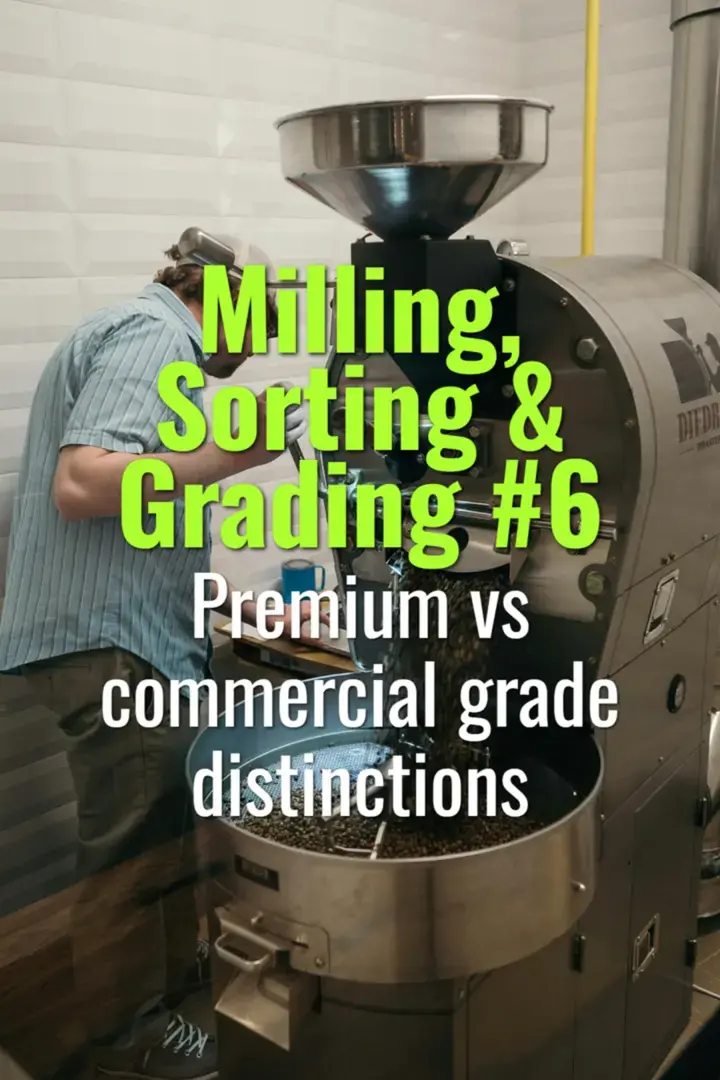Premium vs commercial grade distinctions
This topic explains the distinctions between premium (specialty-grade) and commercial-grade coffee, focusing on physical standards, sensory outcomes, and market implications.
- Coffee Basics Nerds
- 2 min read
Article 6 of 12 in Milling, Sorting & Grading/

Specialty / Premium Grade Coffee
- Defect Counts (SCA standard): ≤5 full defects per 350g sample.
- Moisture & a-w: 10–12% moisture; water activity 0.55–0.65.
- Screen Size: Often ≥16 (medium-large beans); uniformity expected.
- Cupping Score: ≥80 points on SCA scale.
- Cup Profile: Clean, distinctive flavors, vibrant acidity, sweetness, balance.
- Traceability: Documented lot identity (farm, variety, process).
- Market: Specialty buyers, roasters, competitions.
Commercial Grade Coffee
- Defect Counts: 9–23 full defects per 350g sample (Exchange Grade).
- Moisture Control: Less strict, sometimes >12% allowed.
- Screen Size: Mixed, often includes smaller beans (screen 14 and below).
- Cupping Score: Typically <80 points.
- Cup Profile: Basic, sometimes neutral or inconsistent; earthy or baggy notes possible.
- Traceability: Often blended, limited transparency.
- Market: Bulk, commodity trade, instant/soluble coffee.
Key Distinctions
- Consistency: Premium = consistent, commercial = variable.
- Value: Premium commands higher prices, often with direct trade.
- Identity: Premium linked to terroir, cultivar, and process; commercial often generic.
- Risk: Commercial has higher risk of defects (phenolic, mold, musty).
Premium / Specialty Advantages
- Higher price premiums (2–5x commercial grade).
- Stronger branding and storytelling potential.
- Access to niche buyers and competitions.
Commercial Coffee Role
- Provides volume for mass markets.
- Lower cost, but less differentiation.
- Critical for soluble and blended products.
Lasting Importance
The distinction between premium and commercial coffee defines value chains in the global market. While commercial coffee ensures supply for mass consumption, premium/specialty lots showcase terroir and craftsmanship, driving innovation and rewarding producers for quality and traceability.
You might also like:
- Tags:
- Lasting Importance
- Direct Trade
- Specialty Buyers
- Water Activity
- Acidity Sweetness
- Screen Size
- Higher Risk
- Cup Profile
- Defect Counts
- Commercial Grade
- Sweetness Balance
- Specialty Lots
- Grade Coffee
- Higher Prices
- Moisture Water
- Risk Defects
- Cupping Score
- Defects Phenolic
- Smaller Beans
- Large Beans
- Earthy Baggy
- Coffee Key